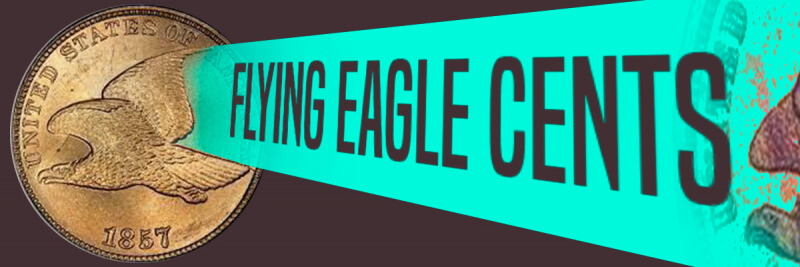
Flying Eagle Cents
By: Caleb Meier
The Flying Eagle Cent was the first ever small cent and was minted from 1856-1858. It was designed by James B. Longacre, the fourth Chief Engraver of the United States Mint. This is a very exciting series to collect because of its rich history, amazing varieties, and beautiful design. There are so many things to know about this series, making it a fun challenge to collect.
The History
In 1837, a man named Dr. Lewis Feuchtwawnger proposed making a smaller cent. He gave the idea to the Mint, but it was rejected for multiple reasons. One reason was that Professor James C. Booth, a melter and refiner for the Franklin Institute, claimed that it would be hard to strike the coin because of its size and hardness. He also said it was going to be difficult to keep a uniform alloy. The Mint rejected Feuchtwanger’s idea, not just because of what Booth said, but also because Feuchtwanger wanted part of the deal. He mostly thought this would happen by personally receiving all the large cents that would be given to the Mint once the small cents took over. The Mint did not like this because they wanted to get all the monetary gain.
Later, in 1849, Booth was hired by the Mint as melter and refiner. Remembering his previous experience with Feuchtwanger’s idea of a smaller cent, Booth reintroduced the idea to the Mint. This time, however, he had a better reason to make the cent smaller. With lots of gold being found in California, gold prices lowered, causing copper and silver prices to go up. By making a smaller cent, they could lower the amount of copper in the coin, therefore lowering the price to create the cent. The Mint liked the idea and started creating pattern coins with different designs and compositions.
1854 and 1855 Patterns
The 1854 and 1855 Flying Eagle Cents are some of the most popular patterns ever created. They were made out of the same composition as the large cent (pure copper) and weighed 100 grains. The design shows a flying eagle on the obverse and a wreath (the same wreath used on the braided hair large cents) on the reverse. About 100 of the 1854 patterns are known and they have a value of $3,000-6,000. There are about 400 1855 flying eagle patterns known and they also have a value of $3,000-6,000.
The popularity of these patterns truly ended up shaping America’s history. Engraver James B. Longacre saw the popularity of these coins and created a flying eagle design similar to the eagle on the Gobright Dollar and the Flying Eagle pattern, but with some modifications. Then, he copied himself and used the same agricultural wreath that he designed for the 3 dollar gold piece for the coin’s reverse.
In 1856, Prof. Booth came up with the idea to make the small cent out of 12% nickel and 88% copper. He sent a coin with that composition on a half cent blank to the Mint. The Mint liked the composition, but said the coin had to be smaller and thicker, or else it could be mistaken for a half cent. Booth did just that and the Mint accepted the idea.
1856 Flying Eagle Cent Pattern
Accepting both the composition from Booth and the design by Longacre, the Mint created the classic 1856 Flying Eagle pattern. Because this coin has the same design and composition of the actual Flying Eagle Cent, it is often considered to be the key date coin in the Flying Eagle Cent series instead of being a pattern. With a mintage of about 2,000, this coin is worth a lot of money. In circulated grades, it is worth $11,000-14,000. This proof coin is worth $30,000-40,000 in an average proof grade and could be worth $225,000 in PF66, the highest grade one of these patterns has received.
With everything running smoothly on the 1856 patterns, the Mint decided to strike the first U.S. small cent under the Act of 1857. The act required 1857 small cents to be released into circulation and all large cents and half cents to be sent to the Mint to be melted. However, in 1857 and 1858, there were a lot of problems with striking the Flying Eagle due to the complicated design and hard metal. Something had to be done, and it probably required a slight change in the design.
The Design
The Flying Eagle Cent pictures an image of an eagle in full flight on the obverse and an agricultural wreath on the reverse. However, the Mint had many problems with this design because it was very detailed and would not strike up on the hard copper-nickel composition. This resulted in two different design types.
The first type was the tall letters design. It was used on cents from 1856 through the first half of 1858. This design had tall letters, a high relief eagle, and the “AM” in “AMERICA” are connected. However, the higher relief was almost impossible to strike in full detail because of the hard metal. This resulted in a small letters design.
The small letter coins were made to help the coins strike up better and to help extend die life. This modification was the work of the assistant engraver, Anthony Paquet. The new design featured a lower relief eagle, smaller letters, and the letters “AM” in “AMERICA” were separated. However, even with these modifications, the dies still broke quickly and the design could not be struck fully.
After the small letters design failed, Anthony Paquet frantically tried to save the Flying Eagle design by creating a Flying Eagle pattern. The pattern featured a completely flat eagle and very tall letters. Even though this design may have worked, the Mint was done with the Flying Eagle and the design had to retire.
Errors and Varieties
One of the most fascinating topics in numismatics are errors and varieties. In the Flying Eagle Cent series, the most popular variety is the 1858 8 over 7. This variety can be identified by a small dot above the last 8. During production, the die was ground down until the 7 was visible. A few coins still show signs of the 7 and they are more desirable. Another variety in the Flying Eagle Cent series is the 1857 clashed with a $20 gold piece FS-403. There are many clashed dies in the Flying Eagle Cent series, but this is perhaps the most amazing.
Conclusion
Flying Eagle Cents have been a collector’s favorite for many years. The history, design, and varieties make this series a fun ride to collect. It is an awesome challenge that only the most experience collectors can experience. Now that you have the knowledge to be a seasoned collector of Flying Eagle Cents, will you accept the challenge?
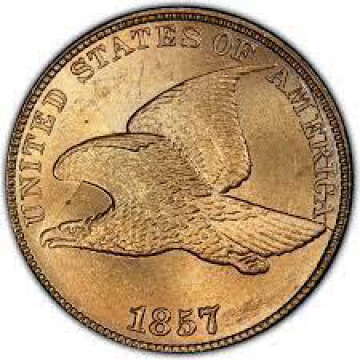
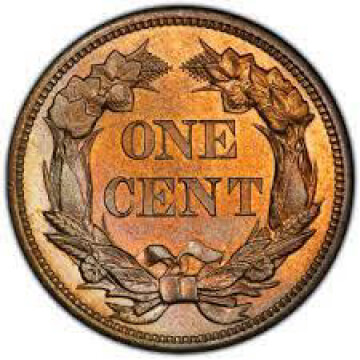
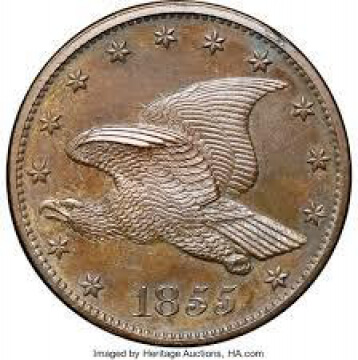
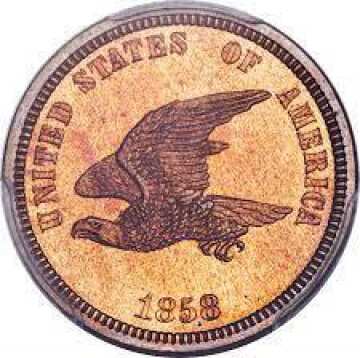
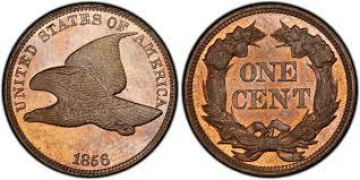
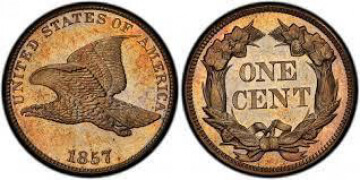
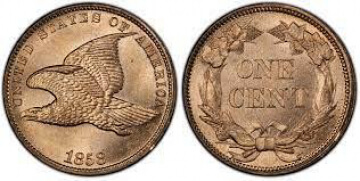
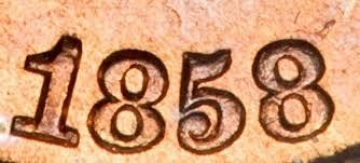
Citations:
ANA eLearning Academy course “Secrets of the Flying Eagle & Indian Head Cents“:
https://www.youtube.com/watch?v=QoURucYYVUU
PCGS CoinFacts:
https://www.pcgs.com/coinfacts/category/flying-eagle-cent-1856-1858/664
CoinWeek:
https://coinweek.com/editors-choice/coinweek-iq-collecting-flying-eagle-cents/
Wikipedia:
https://en.wikipedia.org/wiki/Flying_Eagle_cent
The 2021 Red Book